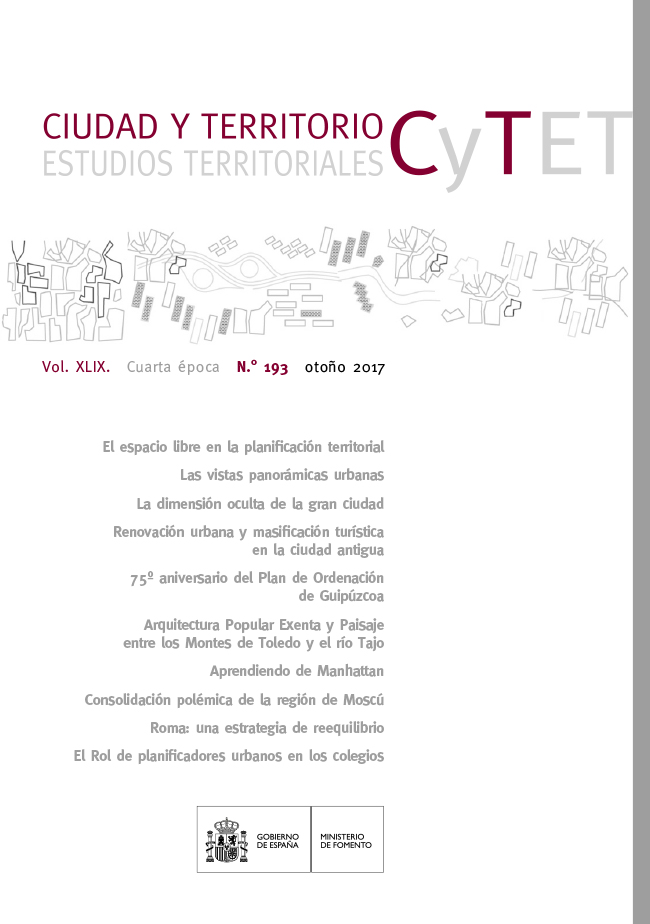Vernacular architecture and Landscape between the river Tagus and Toledo Mountains
Keywords:
Vernacular architecture, landscape, Toledo, TagusAbstract
The variety of soils, topography and distances between the river Tagus
and the Toledo Mountains in Spain has been a crucial factor for the development of
isolated vernacular architecture related to agriculture and farming in this area. The
aim of this study is to analyze how the landscape heterogeneity has determined the
different building types and construction details of vernacular architecture. All the
isolated buildings studied, related to farming activities at the north-west side of the
Toledo Mountains, have been extremely dependent upon a harsh environment in the
surroundings of the mountains, but subject of permanent benefit from the economic
resources on the banks of the river Tagus. The results of this research project show
how creating a descriptive map of this architecture does not only require the definition
of the different construction details, but also the analysis of the progressive mutations
and changes that can be observed as we descend from the mountains to the
river. Most simple building types become more complex as orography and soil composition
allow for the attainment of greater resources and profit. Other vectors of
transformation that crosses the map from East to West are the rocky outcrops and
sandy territories, or the clay and slate soils that, in some parts, reach the river. The
understanding of the vast decisions that had to be made in the construction of the
buildings, considering all the various factors mentioned, has been one of the major
objectives of this study.
Downloads
Downloads
Published
How to Cite
Issue
Section
License
Copyright (c) 2017 Adelaida del Puerto García

This work is licensed under a Creative Commons Attribution-NonCommercial-NoDerivatives 4.0 International License.
Considering the provisions of the current legislation on Intellectual Property, and in accordance with them, all authors publishing in CyTET give -in a non-exclusive way and without time limit- to the Ministry of Transport, Mobility and Urban Agenda the rights to disseminate, reproduce, communicate and distribute in any current or future format, on paper or electronic, the original or derived version of their work under a Creative Commons Attribution-NonCommercial-NoDerivative 4.0 license International (CC BY-NC-ND 4.0), as well as to include or assign to third parties the inclusion of its content in national and international indexes, repositories and databases, with reference and recognition in any case of its authorship.
In addition, when sending the work, the author(s) declares that it is an original work in which the sources that have been used are recognized, committing to respect the scientific evidence, to no longer modify the original data and to verify or refute its hypothesis. Author(s) also declare that the essential content of the work has not been previously published nor will it be published in any other publication while it is under evaluation by CyTET; and that it has not been simultaneously sent to another journal.
Authors must sign a Transfer of Rights Form, which will be sent to them from the CyTET Secretariat once the article is accepted for publication.
With the aim of promoting the dissemination of knowledge, CyTET joins the Open Journal Access (OA) movement and delivers all of its content to various national and international indexes, repositories and databases under this protocol; therefore, the submission of a work to be published in the journal presupposes the explicit acceptance by the author of this distribution method.
Authors are encouraged to reproduce and host their work published in CyTET in institutional repositories, web pages, etc. with the intention of contributing to the improvement of the transfer of knowledge and the citation of said works.








 Enlace a CyTET en Linkedin
Enlace a CyTET en Linkedin